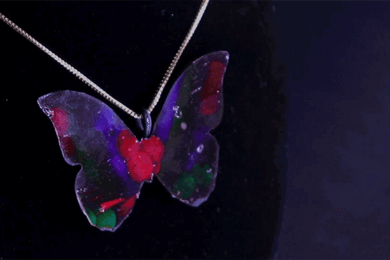MIT research indicates that an alternative approach to landing bigeye, yellowfin and albacore tuna may be more effective and friendlier to marine mammals than the methods currently used.
The two-year study of midwater pair trawling was authorized by the National Marine Fisheries Service (NMFS), which has permitted only long-lining and gill netting since 1993 for commercial tuna fishermen on the East Coast. While little data exist regarding the exact by-catch (the catch of untargeted species) with these techniques, both involve levels that concern fishermen and environmentalists alike.
In the study, which was conducted by the MIT Sea Grant Center for Fisheries Engineering Research (CFER), a small group of fishermen spent two seasons doing midwater pair trawling for tuna in the Northwest Atlantic. With this method, two vessels work together with each boat pulling on one side of a net. Accompanied by NMFS observers on 95 percent of the trips, the fishermen documented the performance of their fishing gear for each haul and recorded all catches.
Results from both seasons show a small number of encounters with sea turtles and marine mammals, due in large part to the fact that the nets are quickly lowered to depths where tuna, and not the protected species, congregate. The large mesh size of the pair-trawl nets also allows smaller fish to escape. As a result, the average size of trawled tuna are larger than those caught by long liners. The unharmed smaller fish are thus left to grow, reproduce and rejuvenate the stocks.
"The extensive documentation of this experimental fishery provided NMFS with the rare opportunity to use scientific data to make decisions regarding what kinds of fisheries should be permitted," said Clifford Goudey, director of CFER and coordinator for the experiment.
Despite that data, he said, NMFS recently denied a petition by the mid-water pair trawlers to allow their fishery for the fishing season that began in mid-August. "I'm disappointed with the ruling," he said. Nevertheless, the fishermen involved in the experiment are still intent on getting authorization for the techniques they've helped develop. "They believe in what they're doing and are going to pursue this," Mr. Goudy said.
MIT Sea Grant is part of a national network funded by the National Oceanic and Atmospheric Administration in the Department of Commerce.
The full report on the study, The 1995 Experimental Pair Trawl Fishery for Tuna in the Northwest Atlantic (report #MITSG 96-17), is available through MIT Sea Grant by calling x3-7041.
A version of this article appeared in MIT Tech Talk on September 18, 1996.





